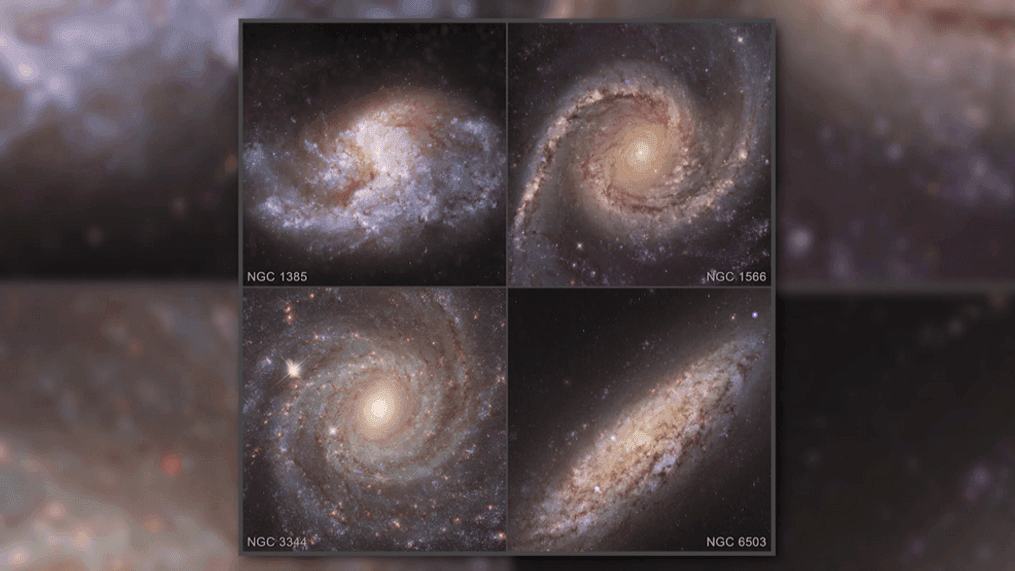Growing black holes are swallowing thousands of stars in space, NASA says
NASA says black holes in space are swallowing thousands of stars as they grow in mass. (Photo: NASA via CNN Newsource)
WASHINGTON (TND) — Black holes in space are getting bigger and stronger, according to NASA.
A new survey of more than 100 galaxies by the space agency's Chandra X-ray Observatory "has uncovered signs that black holes are demolishing thousands of stars in a quest to pack on weight."
This means those black holes are growing. NASA shared photo composites of four galaxies.
X-rays from Chandra, shown in blue, were overlaid on optical images from NASA's Hubble Space Telescope of the galaxies NGC 1385, NGC 1566, NGC 3344 and NGC 6503.
These new results suggest a somewhat violent path for at least some of these black holes to reach their present size — stellar destruction on a scale that has rarely if ever been seen before," NASA said in a news release.
The four galaxies shown in the graphic are among 29 showing evidence of growing black holes near their centers.
Astronomers have conducted several detailed studies through the years to distinguish black holes, generally breaking them up into two classes:
- Stellar-mass black holes – a small varietythat typically weighs 5 to 30 times the mass of Earth's Sun
- Supermassive black holes – these live in the middle of most large galaxies, which weigh millions or even billions of solar masses
Studies conducted in recent years suggest an in-between class exists and is needed for "intermediate-mass black holes," also known as IMBHs.
The new Chandra study may explain how IMBHs are formed — through the "runaway growth of stellar-mass black holes."
Black holes are formed by consuming clusters of unlucky stars passing within their gravitational pull, NASA said. The latest research suggests there are very dense clusters of stars at the center of some galaxies.
With stars so closely bunched together, this creates the perfect environment for IMBHs to form. Theoretical work conducted by a team of scientists implies a stellar-mass black hole will rapidly grow into an IMBH as "it pulls in, shreds and ingests the abundant neighboring stars in close proximity."
The latest study suggests this process can occur at any time in the universe's history, meaning IMBHs "can form billions of years after the Big Bang, right up to the present day."
A paper describing these results appears online in The Astrophysical Journal.




